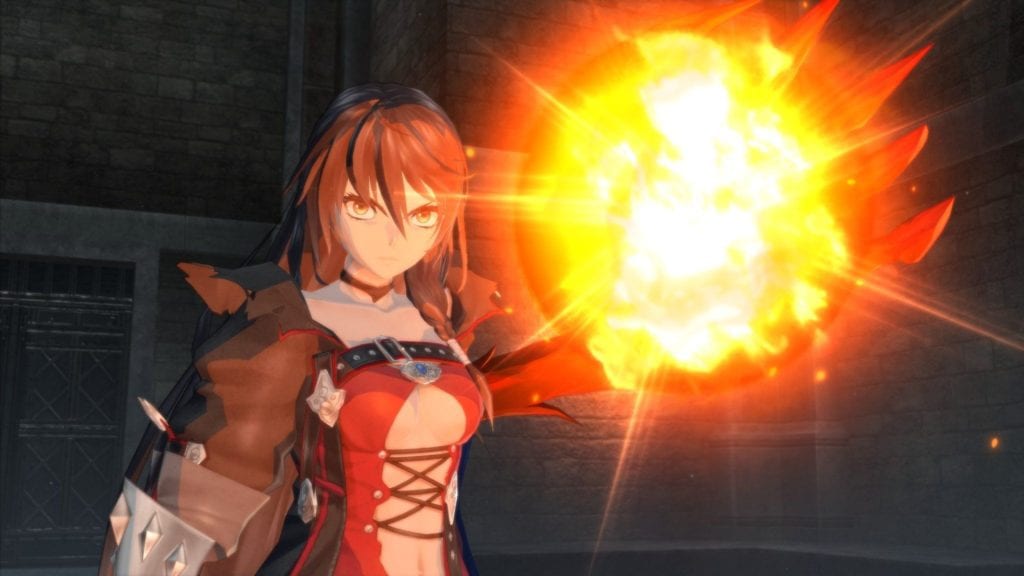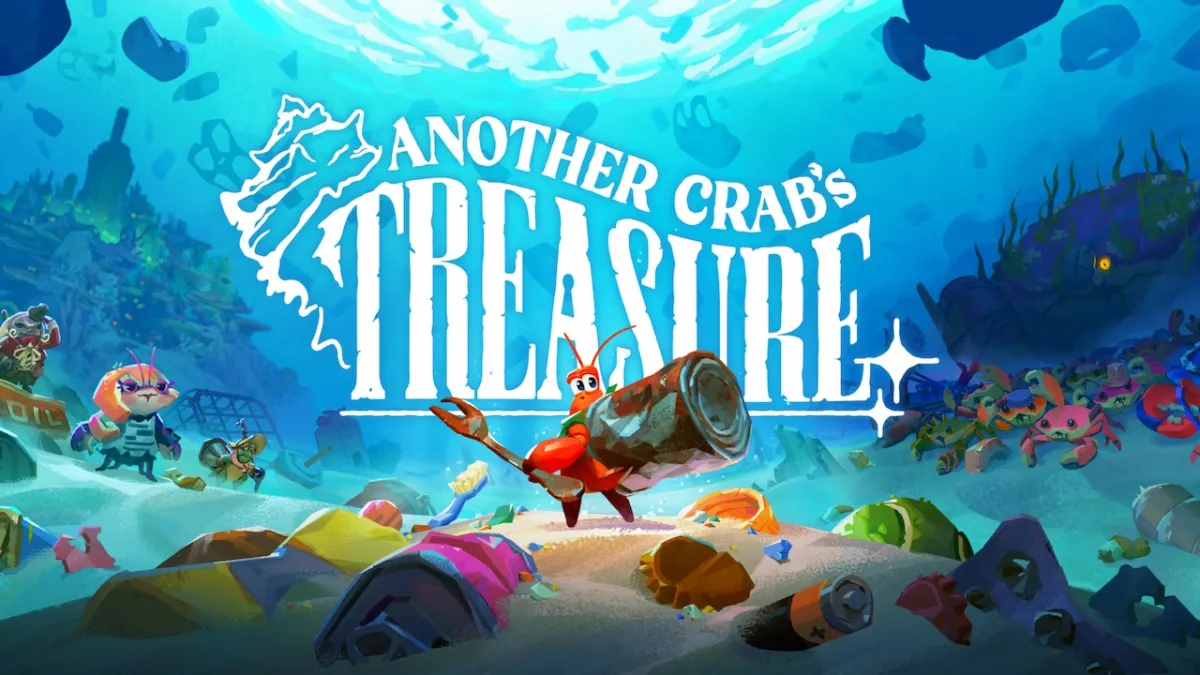Unlike a lot of other Japanese games that get moved across to the PC (whether that move is the result of careful engineering or heavy shunting), I don’t have a lot of experience with the Tales of series. I played Tales of Phantasia back when emulating the SNES was a big new thing. I reviewed the excellent Tales of Vesperia on the Xbox 360, many years ago. I… spent about two hours with Tales of Zestiria on PC? And that’s about it.
Still, hopes have been pretty high for Tales of Berseria, with desperate prayers being sent out that the PC version would have a fair bit of time devoted to its development. And those prayers have – mostly – been answered.
For what it’s worth, this is not a full review because PC code only turned up on Friday, and the 30-odd hours I’ve spent isn’t quite enough to finish a massive JRPG unless you’re speedrunning it – and I doubt I’d be able to comment on a lot of things if I’d been trying to speedrun it. So instead, we’re going to talk about the technical side of the game, with a review to follow when I pour a lot more time into it.
As is obligatory, let’s start off by saying that I’m running on an i7-3820 with 16GB RAM and a GeForce GTX 970. Let’s then continue with tradition by having a look at the graphical options.
Not bad. Not great, but not bad. Native 60FPS and support for up to 5120×2880 resolution are the biggies, although it’s nice having options like Reduce Animations (which makes the NPCs perform less complex animations if they’re distant) and Occlusion Culling (which stops the rendering of stuff you can’t see). Also, it’s nice having explanations of what the options actually do.
I can’t say whether or not these options have much of an impact on framerate, unfortunately, because Tales of Berseria flies along at 60FPS regardless of what I set it to. It’s worth noting that the animated cutscenes are also apparently running at 60FPS, but I suspect they’re rendered at 30FPS. On the other hand, considering they’re anime videos, it’s a bit hard to tell and it’s not something I’m really complaining about.
The graphical options don’t make a huge amount of difference to the way the game looks, either. Differences are noticeable, but the stylised art means it’s really not too bad. Have a look at some comparison shots below.
Tales of Berseria isn’t the best looking game in the world – it looks like a console game running a bit sharper and at a higher resolution, which is basically what it is – but, again, the art makes it look pretty passable regardless. I don’t have any complaints regarding the way it looks, if only because it looks basically exactly as I expected.
Then we have the controls.
These control options are largely as you’d expect, with the downside that you can’t directly re-bind the mouse buttons. There may be a workaround for this (especially if you’re using a mouse with buttons that can be configured to replicate keyboard inputs) but otherwise you’re stuck with just using what the game assigns you. This can be a massive problem, for reasons we’ll get to a bit later.
The final options screen is… well, the options screen. It’s mostly what you’d expect (Subtitles on/off, volume controls, map rotation speed and reversible camera axes) albeit with a few additions, like combat difficulty – which you can change at any time in your playthrough – and input buffer window, which… changes the window you have to input the next move in a combo during combat.
The big surprise is that Tales of Berseria works, for the most part, incredibly well on mouse and keyboard. I actually prefer it on mouse and keyboard to controller, in fact. It’s not perfect – prompts show keyboard inputs rather than mouse inputs, which is a pain in the ass when you’re trying to work out which combat artes are mapped to the mouse (pro-tip: I’m pretty sure up arrow is Shift-RMB, left is Shift-LMB, right is LMB, and down is RMB) and there are one or two screens that require a press of Return rather than LMB, but that’s about it. Likewise, the camera rotation feels very odd on the mouse, and I had to lower the in-game rotation speed to absolute minimum to make it remotely usable. Otherwise, it’s pretty great. And yes, all of the menus support the mouse. Praise be.
There is one exception to this which is so huge that it borders on making the mouse/keyboard controls unplayable, and this is the dreaded Shift key.
Tales of Berseria‘s combat works in real-time. You control one character of your party of four, and your attacks are mapped into preset combos of up to four different moves. Tapping LMB four times, for instance, will trigger four attacks from the combo bound to the left mouse button. It’s simple and fairly intuitive, and there’s some joy to be found in setting up combos of moves that are effective against particular enemies or in particular situations.
On a gamepad, these combos are triggered with the face buttons. On the mouse and keyboard, they’re (by default) the four arrow keys, or both mouse buttons and the shift key pressed in conjunction with both mouse buttons. I wasn’t initially too keen on having the shift key work as a modifier, but hey, it turns out it largely works.
Except that it doesn’t, because the shift key doesn’t really work as a modifier. It seems to work as an additional button press, which means that to perform your Shift-LMB combo, you do not hold down Shift and tap LMB four times. What you actually need to do is tap Shift-LMB simultaneously, four times in a row. Which is really hard to do even when you’re not also trying to keep an eye on all of the enemies around you and figure out which one is casting a giant party-killing spell and so on.

Combat makes a lot more sense when you’re actually playing it, rather than the confusing mess of visual effects that it appears to be in screenshots.
This isn’t too much of a problem early on, because you don’t have the moveset for four distinct combos. It’s also not much of a problem on lower difficulties, because you can almost spam whatever combo you like and manage fine. But if you ramp up the difficulty to get a bit of a challenge (and some bonus XP and the like, should you perform well) then you suddenly need access to all of the combos.
I really, really hope that this is changed, with Shift actually working as a constant modifier, because then I can go back to playing on a mouse. As noted, you might be able to get around it by binding the extra mouse buttons to the other two arrow keys in an external program (Razer Synapse, say) but it can’t be done within Tales of Berseria itself, and it can make it a nightmare to actually pull off the combos you want. Fiddling with the input buffer window may also assist, and you can always do the workaround of mapping the combos to something like 1, 2, 3, and 4 on the top of the keyboard, but quite frankly I just gave up and plugged in a gamepad.
Most of this is probably familiar to anyone who played the demo, of course. I will say that one thing that has changed since the demo is that Tales of Berseria now actually seems to not hate multi-monitor setups. Back then, I had a hell of a time getting it to work in fullscreen on my primary monitor because it kept shouting “HAHA NO” and running off back to my secondary one, but I haven’t had this issue at all since launch. This may, of course, be that it’s kept my settings from the demo (which I eventually did through a process of switching to windowed, moving it to the main monitor, going to fullscreen, going to borderless windowed, switching back to windowed, moving it to the main monitor again, sacrificing a goat…) but I’m hoping otherwise.
I’m mostly enjoying Tales of Berseria itself, too. The story has some interesting ethics stuff going on, in which the majority of the world considers you to be the bad guy and to some extent they’re right. Protagonist Velvet is off on a quest to kill the saviour of the world after said saviour rather bloodily sacrificed someone dear to her. On the one hand, that sacrifice may have directly led to saving the world; on the other hand, revenge is a powerful motivator. Emotion versus reason is the theme here, basically.

The character textures, though, are really quite nice – again, possibly down to the art style. No comment about Velvet’s choice of clothing, mind you.
Combat is fun, the characters manage to be rather likeable despite generally being a band of near-villains, and there seems to be just enough depth to the mechanics. There’ve been a couple of whopping difficulty spikes and not enough globe-trotting for my liking, and I’ll be a little disappointed if the “saviour” turns out to actually be a bad guy with a catastrophic plot, but I have yet to play enough to render a final judgment.
So, that one control issue aside – and that is a big issue if you lack a gamepad or a programmable mouse – Tales of Berseria is a decent port. Not a perfect one, and not an example of how to make the PC version the absolute best version around, but it’s entirely workable and I’ve seen no reason why you’d pick it up on console over PC. Framerate is high, loading times are low, and I’d be perfectly happy playing it on PC. There’s always a demo to try out if you’re not certain, but a few things seem to have improved since then, so bear that in mind.
Let’s just hope that the Shift button gets patched, eh?















